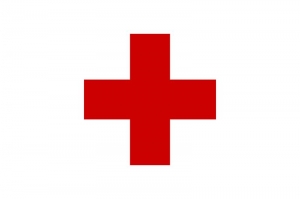Blood brothers and sisters!
Research news
Health planners need to overcome migrants’ feelings of exclusion from mainstream Australian society and promote blood donation as a donation from everyone, for everyone, if they want to increase the blood donor rates among African communities.
That's the considered view of a Deakin research team in a just published study - the third of its kind in the world and the first in Australia to look specifically at the African communities’ attitudes and potential barriers to blood donation.
It is part of a joint project between the Australian Red Cross Blood Service and Deakin carried out by Professor Michael Polonsky from the University’s School of Management and Marketing, Associate Professor Andre Renzaho from the University’s Centre of Population Health and Bianca Brijnath who has since moved to Monash University.
Professor Polonsky said levels of blood donation in Australia were generally low with roughly three percent of the population giving blood.
“This figure is slightly lower than in the United States and United Kingdom where the percentages are respectively five and six percent,” he said.
“The low donation rates mean countries cannot simply rely on existing donors as sometimes demand can outstrip supply but also the structure of the population may change for instance via immigration.”
Professor Polonsky said this situation was compounded when migrant communities had unique health needs and different cultural views about health care.
“In this particular instance African migrants have rare blood types and conditions not seen in the Caucasian population but which can require higher levels of transfusion and targeted blood products,” he said.
“The Blood service thus need to ensure that migrants from Africa are engaged as blood donors in order to meet the specific blood needs of their African communities.”
Professor Polonsky said people in the study were positive about blood donation believing it should go to help those who suffer or who were in need.
“There was an order in which donation seemed to apply, with men and young people donating first, followed by women and older people,” he said.
“In their home countries in Africa, men often tended to donate directly to family or community members based on immediate appeals, some had donated in institutional settings such as schools or army clinics but broadly, as in Australia, blood is seen as a gift to be given free of charge.”
Associate Professor Renzaho said experiences in their home country however shaped people’s interpretation of how blood donation occurred in Australia.
“There was deep uneasiness about the blood service with many viewing it literally as a ‘blood bank’ and not a voluntary, non profit organisation.
“Respondents felt that donating their blood there was less acceptable because it could be sold for profit or go to waste by being stored in the fridge.
“These views reflect a widespread lack of knowledge about the blood donation process in Australia, which might not be unique to new migrants in Australia or elsewhere.”
Associate Professor Renzaho said one unanticipated barrier to donation was that some respondents felt their blood would be excluded from the donation pool on the basis of their race.
“In other contexts this may be warranted, for instance in Israel the blood service disposed of blood collected by African donors, but no such issues have arisen in Australia,” he said.
“We thought this view was influenced by a broader social issue, that is feelings of social exclusion from mainstream Australian society which then affected how the participants thought their blood donation would be received.
“This feeling accompanied by direct experiences of discrimination and a general mistrust of the health system affected the motivation to donate.”
Associate Professor Renzaho said these findings matched work done with African migrants elsewhere.
“In short, feeling included in the mainstream society is positively correlated to blood donation,” he said.
“Any attempt to increase donation rates among African communities needs to account for these wider systemic issues of exclusion and offer more opportunities for inclusion.
“The participants did suggest ways to improve the situation including racial representation of African people in public appeals for blood donation, education of health services and multiracial forums where different communities could come together.”
Further information
Transfusions early online edition (February 2011) Barriers to blood donation in African communities in Australia: the role of home and host country culture and experience, Michael Jay Polonsky, Andr? M.N. Renzaho, Bianca Brijnath Social Science & Medicine, Article in Press, Available online 13 June 2011,
“They Don't Want Our Blood”: Social Inclusion and Blood Donation among African Migrants in Australia , Michael Jay Polonsky, Bianca Brijnath and Andr? M.N. Renzaho
Share this story

